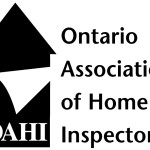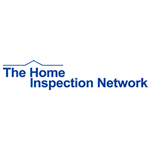
By Mike Heeley – Heeley Home Inspections & Kerry MacMullin – HIP Mould Professionals
One of the most common questions I receive from buyers is, “Does my new home have mould?” They’re always surprised when I reply that it most likely does. The fact is that almost all homes have some mould. If a home has ever had leaks that were to do with plumbing, the basement, a shower enclosure, or the roof, mould may be present. A better question would be, “Is there significant mould in the home which is adversely affecting the house air quality?” This is a more difficult question to answer.
Tracking down and removing mould
The best method to track down fungal materials is by using experience, moisture meters, and infrared cameras to look for evidence of current or past water problems. The basement, bathrooms, and attics are all key places to examine closely. Once found mould can be managed by homeowners themselves if there are less than 3 areas that are less than 1 meter squared in total. For more information on mould cleanup I would recommend reading the EPA’s “A Brief Guide to Mold, Moisture, and Your Home”. If the area(s) exceed that limit a qualified contractor should be brought in to further investigate and to put a remediation plan in place.
Questionable mould services
Due to the increased interest in mould, some Home Inspection companies have responded by offering expensive add-on services with very little reliability. Mould air sampling prior to remediation is a great example of one of these services. A single day’s air samples provide insufficient information to make a decision on the homes air quality. This is because mould levels in the air vary hourly with the amount of moisture present. A very moldy home may have a low measurement due to a dry period where the mould is less active. A perfectly fine home could have a high measurement due to high humidity, a moldy vacuum bag, and/or over watered plants. Mould air sampling is only reliable when a large number of samples are taken over an extended period of time. This is not possible to complete in the short period a buyer has to finish their review of the home. For more information on this topic please read “Home Inspectors and Mold Sampling – Hype or Help?”
The truth is there are no quick, easy, and 100% reliable ways to find mould. If you have elevated sensitivities it is highly recommended to schedule an inspection of the home by a qualified contractor who specializes in mould remediation.
Mould remediation industry
The Mould Remediation industry, like Home Inspection, is unregulated. There are no set processes for removal of the mould and each company will have a different system. It is highly recommended that you do your due diligence when selecting a remediation company. Good questions to ask are:
- How long have you been in business?
- Can you provide references?
- What specifically is your process?
- If any, what chemicals are used?
- Is there staining present after the remediation?
- Do you confirm the removal with “after” lab testing?
- What is your warranty?
Household Mould Simplified
By Kerry MacMullin – HIP Mould Professionals
Mould Remediators are often brought in to provide service after a reputable home inspector has found mould during a home inspection. Some prospective buyers walk away from a home found to contain mould – often unnecessarily – due to a fear of the unknown: conflicting information about mould / mold abounds. It is important to note that not all mould found flags the same depth of issue. It is also important to note that while mould that has taken hold presents indoor air quality issues, in almost all cases good-as-new results can be achieved. The following is intended to arm you with the facts with which to safely navigate household mould discovery and the confident hire of a mould remediator and / or management of minor surface mould on non-porous material (see below*).
Fixing just the cause or just the mould = each represents only half the equation
There are mould spores everywhere — indoors and outdoors — and, we breathe them in with little affect as long as they represent a small enough percentage of the particles in air. Mould spores create an issue when they set up shop in your home. They will only do this if they find an environment with high humidity, low airflow, and just enough “food” to sustain growth (water, wood, drywall, etc…). Once mould has taken up residence: a return to homeostasis involves correcting the moisture / ventilation imbalance + killing the mould and its spores. Doing one without the other will only present a temporary fix. Using paired-down examples in bathrooms and attics – one can see how the depth of the issue (and associated treatment) can vary greatly. The following presents some high points, but please note that conditions can vary widely.
Mould in Bathrooms
When mould is found in bathrooms, it is quite easy to tell if you are looking at evidence of some simple lifestyle habits that need altering and some easy-to-treat surface mould versus a more complex issue. A bathroom should have a functional fan and/or operational window to properly vent away shower / bath moisture, and the ventilation feature that the bathroom has should be used during and for a good 20-40 minutes after each bath or shower.
*In this case, mould found on the surface of your painted wall can be washed away (please use protective gear: mask, goggles, gloves) with soap and water. If, however you have drywall that is soaked through, having professional diagnostics is recommended.
Mould in Attics
It may surprise you to learn that about 80% of the work that we do is in attics. Most people never venture into their attics, perhaps a case of out of sight, out of mind. The good news is that while attic mould can be tricky, the causes – which must be addressed – are almost always the same, and an effective remediator can and should leave affected roof boards looking like new. Here are the top three causes of attic mould:
- Improperly vented bathroom fans, namely one that is venting into your attic instead of venting outside.
- Blocked soffit vents: when blown-in insulation gets added, care must be taken not to cover over soffit vents.
- Insufficient passive roof vents for the size of your attic.
Ideally your mould remediation contractor will identify and directly address any/all of the ventilation issues + kill the mould – doing both is the only way that a meaningful guarantee can be issued. Please visit the HIP site for a more comprehensive explanation of mould remediation comparisons.


